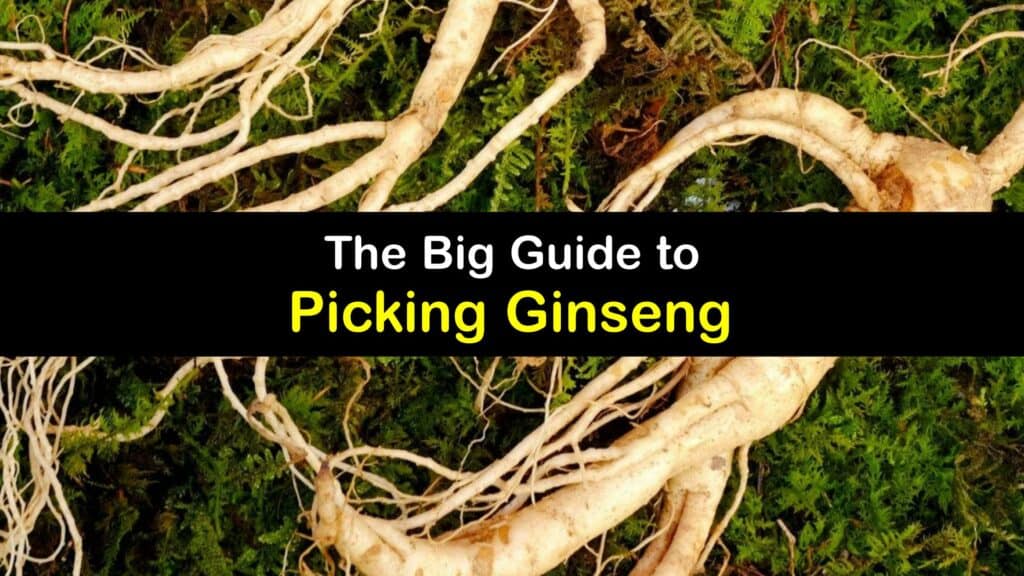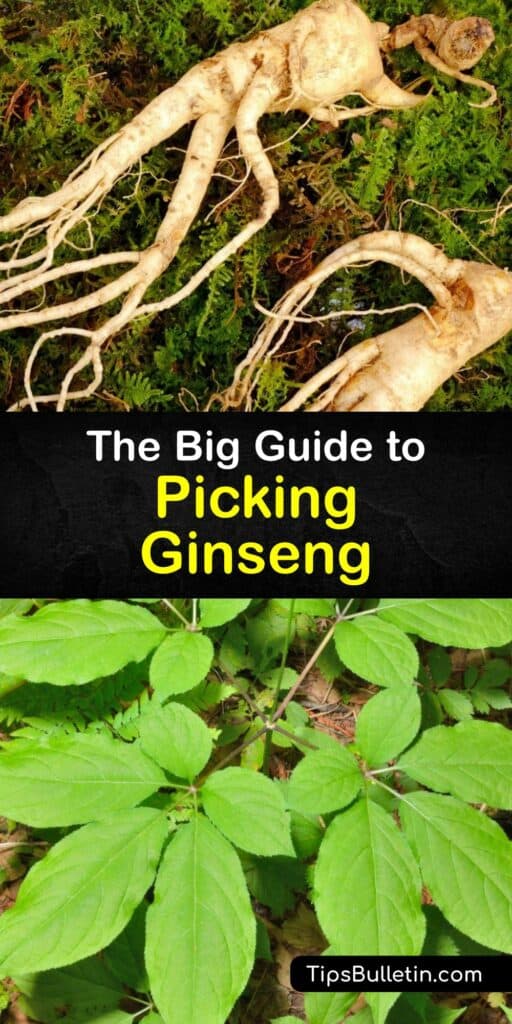Ginseng grows slowly. The ginseng growing zone is under a section of the eastern United States’ deciduous woodland canopy. Many want to know how to harvest ginseng and when to pick ginseng for the best roots.
Ginseng root’s therapeutic and curative capabilities are the fundamental reasons for its use but has the potential to be over-harvested due to its high demand. It is designated an endangered species in various parts of the world and is subject to an international treaty. Ginseng is a non-timber forestry item, so diggers must follow laws regarding wild immature seedlings and mature seeds.
Ginseng is a perennial herb native to North America’s Appalachian area and eastern Asia. It has a bunch of bright red berries ascending from a wreath of green ginseng leaves on a narrow stem. Learning when to harvest ginseng is essential whether you’re growing ginseng in your home garden or foraging for it in the wild.

When to Pick Ginseng for the Best Roots
Growing ginseng in the home garden or growing ginseng in pots and containers requires patience but offers many rewards, so it’s vital to know when to harvest ginseng. Gathering at the correct time with the proper method ensures the best product and avoids legal issues when collecting in the wild.
The name ginseng derives from the Chinese word rénshn, which means man root since the fleshy root resembles a man’s legs.
For thousands of years, the Chinese have cherished ginseng root and goldenseal as herbal cures, claiming they improve cognitive power, restore energy, reduce stress, and act as anti-inflammatories.

Due to high demand for the root, American ginseng was nearly extinct once, and prices skyrocketed. Wild ginseng harvesting and production in the United States are now heavily restricted. Still, the costly root remains popular as a supplement and as an ingredient in botanical teas and energy beverages.
Whether you’re hunting for wild ginseng or growing it in your garden, similar to the way to propagate ginger, knowing how to harvest ginseng and when to pick ginseng ensures you get the best quality products.
Ginseng Varieties and Regulations
American ginseng (Panax quinquefolius) grows wild in North America among leaf litter in many areas such as Minnesota, Ohio, Maryland, and the Appalachian region. These plants are natural resources, grow on private property, in many a national park and national forest, and are raised by ginseng dealer establishments.
According to the U.S. Fish and Wildlife Service (USFWS), ginseng plants are an endangered species of wild fauna and flora, complicating the collection and export of wild American ginseng.
Asian ginseng is a perennial growing in the mountains of East Asia. It is among the longest-lived of all plants and has been used for health and medicinal purposes for hundreds of years. Asian ginseng has a long gnarled root with stringy protuberances like American ginseng.
When to Harvest Ginseng
Ginseng is a slow-growing plant. After germination, ginseng seeds take around four years to produce mature plants. A harvested plant must have at least three leaves or prongs before it’s suitable for diggers to collect the desirable ginseng roots.
Ginseng is typically harvested in the fall months, and only those plants which have reached an acceptable level of maturity are collected, as harvesting essentially destroys the plant. Many growers take care to replant seeds in place of any plants they collect.
Once you learn how long does it take for ginseng to grow, it’s easy to know when are ginseng ready to pick. It’s critical to check local, state, and international regulations before harvesting ginseng on public or private property.
Ginseng harvesters are heavily regulated through the Convention on International Trade in Endangered Species and often require a dealer’s license. Growers may collect cultivated ginseng from their own ginseng patch at their leisure through the harvest season.
How to Harvest Ginseng
Harvesting ginseng is straightforward, and ginseng harvest time allows growers to enjoy the fruits of their labor, or the spoils of their foraging, with fresh ginseng root.
Remove a 5-inch radius of soil around the ginseng plant with your trowel and pull the whole root from the ground. Remove loose soil, being careful not to break off sections of the root. Replant the ripening berries where you dug up the root to allow a new plant to grow there.
Gently wash the roots as soon as possible after harvesting to remove dirt, but avoid damaging the delicate skin. Air-dry the roots for a couple of hours out of direct sunshine, and relocate them to a climate-controlled location.
This unique plant’s root can be consumed raw or used immediately in teas, soups, and stir-fries. The root is also dried and then ground, sliced or grated for later use. Ginseng vs ginger taste is quite distinctive. Ginger has a sweeter flavor than ginseng.
Drying Ginseng Root
Set your harvested and washed ginseng roots on racks for up to two weeks to dry and preserve them. Dry them on shelves with screens, as they increase air circulation around the roots. During the drying process, keep the temperature between 70 and 100 °F and rotate the roots occasionally to achieve even drying.
The insides of your ginseng should be white if it has been adequately dried; test this by breaking some open. A brown ring inside the ginseng root indicates it dried too quickly, and moldy portions suggest it dried too slowly.
Ginseng root has been highly coveted and used for its medical benefits for thousands of years. Ginseng is known for its antioxidant effects and ability to improve cognitive function, immunity, energy levels, and blood sugar levels.
It’s also being researched to improve mood, increase endurance, and treat cancer, heart disease, exhaustion, and other illnesses. It’s no surprise many growers are interested in adding this powerful plant to their home garden, and others are eager to forage it from the wild to enjoy its benefits.
Learning when to harvest ginseng prevents home gardeners from uprooting their carefully raised plants too soon and protects those digging wild ginseng from the unfortunate legal consequences of gathering it too early.

If you loved this article on how to harvest ginseng, please share these brilliant tips on when to pick ginseng with your friends and family on Pinterest and Facebook.